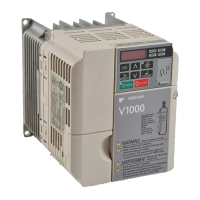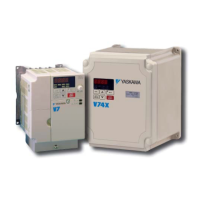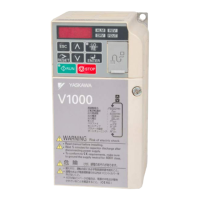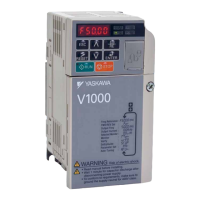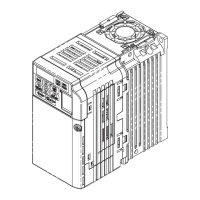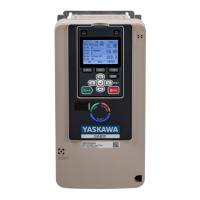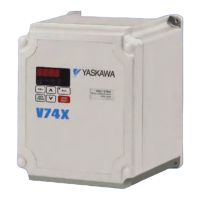n
H3-09: Terminal A2 Signal Level Selection
Parameter H3-09 assigns the signal level for input signal connected to multi-function analog input terminal A2. Below is a list of settings and corresponding
signal levels. Be sure to also set DIP switch S1 accordingly for a voltage input or current input.
0: 0 to +10 V, with lower limit
1: 0 to +10 V, no lower limit
2: 4 to 20 mA
3: 0 to 20 mA
No. Parameter Name Setting Range Default
H3-09 Terminal A2 Signal Level Selection 0 to 3 2
n
H3-10: Terminal A2 Function Selection
Determines which function is assigned to multi-function analog input terminal A2.
No. Parameter Name Setting Range Default
H3-10 Terminal A2 Function Selection 0 to 31 0
n
Multi-Function Analog Input Terminal Settings and Functions
This section describes the various functions that can be assigned to terminal A2 by setting H3-10.
Setting 0: Adds to Terminal A1
By setting analog input to 0, the level of the analog input will be summed with the level of the frequency reference analog input A1.
Setting 1: Frequency Gain
The analog output level will correspond to the chosen frequency reference input, whether it is input via the operator keypad, analog input, serial
communication, option board, or pulse input. Setting 100% will be equivalent to the maximum output frequency of the drive.
100%
0 V (4 mA) 10 V (20 mA)
input level for multi-function
terminals A1 and A2
frequency gain
Figure 5.64 Input for Frequency Reference Gain 1
frequency reference
H3-02
H3-02× 0.5
0 10 V
terminal A1
input voltage
100%
50%
Figure 5.65 Setting Bias Levels for the Output Frequency
Setting 2: Aux Reference
Sets the analog input toe act as an auxiliary speed reference. Input level is a percentage of the drive’s maximum output frequency set to E1-04.
Setting 4: Voltage Bias
Voltage bias boosts the output voltage of the V/f curve as a percentage of motor rated voltage (E1-05). Available only when using V/f Control.
Setting 7: Overtorque Level
Overtorque level sets the overtorque/undertorque detection level using the analog input. This works with Torque Detection Selection 1 (L6-01) and will
take the place of the torque detection level set to L6-02. For general OpenLoop Vector Control, this function is based on 100% of the motor rated torque.
For V/f Control and PM Open Loop Vector, this function is based on 100% of the drive rated current.
Setting B: PID Feedback
Configuring the analog input as PID feedback is a requirement of setting the drive up for PID operation.
Note: For details on PID control,
Refer to b5: PID Control on page 122.
Setting C: PID Set Point
5.7 H: Terminal Functions
YASKAWA ELECTRIC SIEP C710606 18A YASKAWA AC Drive – V1000 Technical Manual (Preliminary)
181
5
Parameter Details

